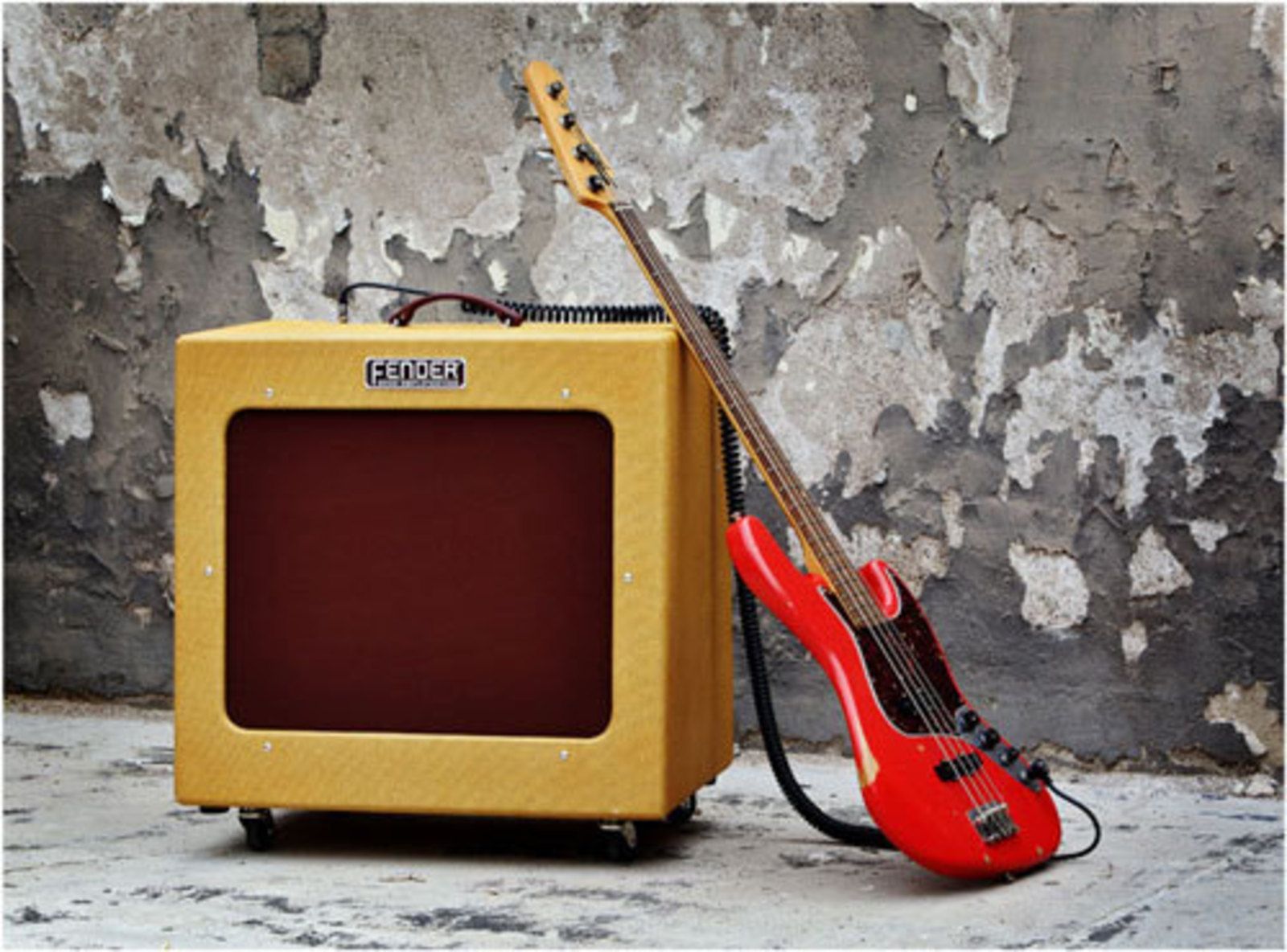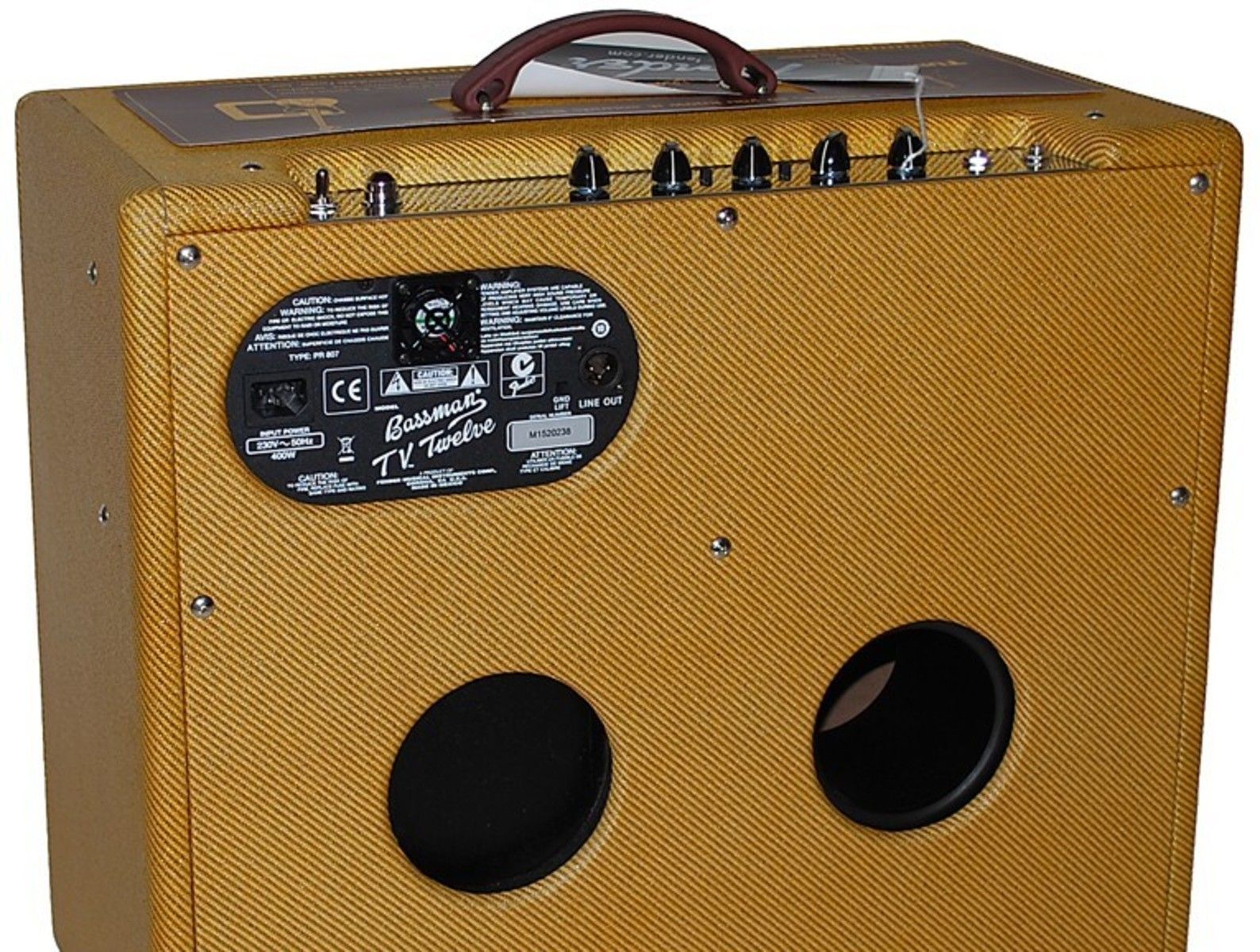The 50's saw the birth of the first electric bass guitars by Leo Fender with the famous Precision Bass model. Inevitably, the first Bassman amps with their tweed covering quickly appeared on the market. To celebrate its non-birthday, Fender introduces a new amp series based on these pioneer models.
 Fender has always made good use of the desire most guitar and bass players have for legendary instruments that are very difficult to get a hold of nowadays. Obviously, that also applies to bass amps. That’s why Fender introduced the new Bassman TV Series whose look and sound is very close to the Bassman amps of the early 50's.
Fender has always made good use of the desire most guitar and bass players have for legendary instruments that are very difficult to get a hold of nowadays. Obviously, that also applies to bass amps. That’s why Fender introduced the new Bassman TV Series whose look and sound is very close to the Bassman amps of the early 50's.The series includes four models: the Duo Ten equipped with two “Fender Special Design” Eminence 10" speakers, the Fifteen with one Celestion Green Label 15" speaker, the Ten with one Celestion Green Label 10" speaker, and the Twelve equipped with one Celestion Green Label 12". We will test the latter in this review. For your information, both the Duo Ten and the Fifteen are equipped with casters which is a good idea considering their weight (61.3 lb).
As soon as you unpack it you’ll be immediately seduced by the old-fashioned tweed covering, the chrome chassis with mirror effect (so you can redo your hair), the black chicken head knobs… It isn’t missing anything! The Twelve, with its 12" speaker, is quite heavy (44.6 lb) and bulky (20" × 22" × 12.75"). In other words, it’s huge! The manufacturing and finish quality leave no doubt about its sturdiness–it will surely withstand long rehearsals, studio sessions and live gigs without a hitch. The old Fender logo, the small red light and the cloth grill in front of the speaker round up this compelling Bassman TV. The plastic handle is the only minor drawback–we’d rather have a leather one.
Underneath the Hood
 The Bassman TV has a tube preamp based on a 12AX7 valve, a class-D power amp and passive circuitry. Its Celestion Green Label 12" speaker is driven by 150 watts of power into 4 ohms. The controls are nothing fancy, which is no surprise considering that it’s a vintage-style amp. It has only one channel, two instrument inputs (one with 6dB pad so that the amp can match all sorts of bass guitars) and the usual controls: gain, bass, mid, treble, and volume plus deep and bright switches to boost low and high frequencies. Last, we have the power switch with a bright glowing indicator; even the dumbest amongst us should manage. Fender recommends us to play with high gain and volume settings and also to use an overdrive pedal–the Bassman likes it hot! If you take a look at the back of the amp you’ll find two anachronistic details: an XLR direct output (to connect the amp directly to a mixer or an audio interface) with ground lift switch (to avoid ground loops) and a small fan to keep the amp cool. On the rear side you’ll also find two bass-reflex ports, one of which is partially closed with a wooden plate.
The Bassman TV has a tube preamp based on a 12AX7 valve, a class-D power amp and passive circuitry. Its Celestion Green Label 12" speaker is driven by 150 watts of power into 4 ohms. The controls are nothing fancy, which is no surprise considering that it’s a vintage-style amp. It has only one channel, two instrument inputs (one with 6dB pad so that the amp can match all sorts of bass guitars) and the usual controls: gain, bass, mid, treble, and volume plus deep and bright switches to boost low and high frequencies. Last, we have the power switch with a bright glowing indicator; even the dumbest amongst us should manage. Fender recommends us to play with high gain and volume settings and also to use an overdrive pedal–the Bassman likes it hot! If you take a look at the back of the amp you’ll find two anachronistic details: an XLR direct output (to connect the amp directly to a mixer or an audio interface) with ground lift switch (to avoid ground loops) and a small fan to keep the amp cool. On the rear side you’ll also find two bass-reflex ports, one of which is partially closed with a wooden plate.
So, how does it sound?
 We could use any bass to write the review, but we’ll use a Fender Jazz Bass Road Worn that we tested here before and put a Beyerdynamic M88 mic in front of the speaker.
We could use any bass to write the review, but we’ll use a Fender Jazz Bass Road Worn that we tested here before and put a Beyerdynamic M88 mic in front of the speaker.As soon as we turn on the amp the fan starts running quietly. But don’t panic, it won’t ruin your takes because the amp has such power that any note will easily mask the fan noise.
 The EQ section is smooth, musical and effective. It’s almost impossible to get a bad sound out of this combo, regardless of the settings, which is a good thing! The gain control allows you to enhance the subtle and pleasant character of the amp, while the Deep switch is a great booster. The Bright switch is smoother, especially with our Jazz Bass. Using the amp is a breeze, everything sounds good right away! The response of the volume knob is very pleasant: the amp doesn’t deliver its full output power within the first half of the control range, so you can use the Bassman in your bedroom without shaking the walls. We just miss a standby switch that would allow us to mute the amp while keeping the tubes hot. Given that the output power is not insane, you can really crank up the amp to benefit from its full character–which we really enjoyed.
The EQ section is smooth, musical and effective. It’s almost impossible to get a bad sound out of this combo, regardless of the settings, which is a good thing! The gain control allows you to enhance the subtle and pleasant character of the amp, while the Deep switch is a great booster. The Bright switch is smoother, especially with our Jazz Bass. Using the amp is a breeze, everything sounds good right away! The response of the volume knob is very pleasant: the amp doesn’t deliver its full output power within the first half of the control range, so you can use the Bassman in your bedroom without shaking the walls. We just miss a standby switch that would allow us to mute the amp while keeping the tubes hot. Given that the output power is not insane, you can really crank up the amp to benefit from its full character–which we really enjoyed.Its sound is vintage, round and warm, but versatility is not one of the biggest assets of this Bassman TV. Nonetheless, people who buy such an amp know what they can expect and the amp does justice to its retro design. You have been warned! In the end, the only modern touch it has is the practical and very valid XLR output to record the amp’s sound without a mic.
Here you have some sound samples we recorded with the mic and then via the XLR output.












Conclusion
Fender understood that nostalgia is not only a guitarist’s thing. Even though they, once again, combine some new with some old stuff, the look and the sound quality of this Bassman TV are a real joy. The amp is easy to use, has a personal look and an awesome sound. What could you not like about it? That it’s unique: it has a particular sound and personality and you won’t get anything else out of it. You either like it or not!
- Sexy look
- Manufacturing quality
- Great vintage sound
- Ease of use
- Musical and effective controls
- XLR output
- Personality…
- … but poor versatility
- The bright switch is inconsequential
- No standby switch
